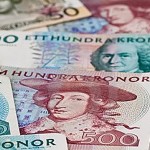Gold futures opened this week down in the red, extending the bearish trend from last week and setting a new nine-month low, as soaring dollar and US stocks drained precious metals of their appeal. Investors now look to key US and EU data to reinforce dollar bulls, pressuring havens further.
Gold futures for December delivery on the Comex in New York traded at $1 215.6 per troy ounce by 8:23 GMT, down 0.08%. Prices ranged from a nine-month low of $1 208.8 to $1 218.4 per troy ounce. The contract lost 1.3% last week.
“Gold is very likely on its way to erasing the year’s gains,” Barnabas Gan, an economist at Singapore-based Oversea-Chinese Banking Corp., said for Bloomberg. “With the Fed likely to end its QE program at its next meeting, the market will likely turn eyes on the Fed’s next move in normalizing monetary policy via higher interest rates.”
Silver for December delivery stood for a 0.80% daily drop at $17.697 per troy ounce, while palladium was down 0.53% at $808.30. October platinum was down 0.41% at $1 331.80.
The highly anticipated Federal Open Market Committee (FOMC) September meeting took place last week, with rate and quantitative easing decisions pressuring havens.
The monetary-policy body of the Fed decided to, as expected, cut monthly assets purchases by another $10bn, steering the QE program to an October close, and to keep the benchmark interest rate at 0.25%. The Fed’s projection for next year was changed, however, with still a “considerable time” between the QE program closing and rates rising. The end-year rate target was raised to 1.375% from the previous of 1.125%, offering dollar bulls significant support.
The US Dollar Index, which measures the strength of the greenback, reached a 4-year peak on the news, weighing on all dollar-denominated commodities, such as gold.
Reflecting on a lower gold appeal, assets at the SPDR Gold Trust, the largest exchange-traded gold-backed fund, dropped to 776.44 tons, the lowest level since December 2008.
“Cash is flowing to the dollar, the U.S. stock market and the U.S. bond market, and out of precious metals,” Peter Hug, global trading director at Kitco Metals, said for The Wall Street Journal. “You get the feeling that (precious metals) investors have just given up.”
US stocks did indeed record a surge in demand recently. S&P 500, the broadest major measurment of US stocks, Dow 30 Industrial and Nasdaq 100, which excludes financial institutions, all logged their highest ever values on Friday.
US stocks and dollar could be further reinforced this week, as plenty economic data is set for release.
Data
The US will post important housing data this week. Existing home sales are set to mark a moderate increase later today, with an annualized rate at 5.2 million, while new home sales will probably log 4.4% higher. Home sales are a key metric of the retail sector, which is the biggest single market in the US, accounting for ~13% of US GDP.
More key US gauges will be reported this week, with durable goods orders set for a rebound after last months all time-high increase. Orders soared 22.6% on a monthly basis in July on the back of massive orders for Chicago-based airplane-manufacturer Boeing. Now orders are looking at a ~18% decrease on a monthly basis, still a significantly lower drop than the jump last month.
GDP figures on Friday are projected to confirm a bullish story for the dollar and US stocks, with the preliminary reading on quarterly growth for Q214 set to log at 4.6%, beating the earlier flash figure of 4.2%.
Meanwhile, EU economic sentiment gauges look to record diminishing confidence in the worlds top single-currency economy, while manufacturing and PMI readings post little change at uncomfortably vulnerable levels.
Last week, Eurozone CPI readings for August were logged, with benchmark consumer inflation at the disappointing 0.4% annual rate. These figures were the last inflation figures to cover a period before the European Central Bank (ECB) reduced the central lending rate to the historic low of 0.05% and announced a €3tn QE program at its September meeting. The positives of ECB’s intervention will not be visible until the next CPI readings.
Weak economic data out of the Eurozone weighs on the euro, which is the US dollar’s main competitor, and as such, any weakness in the euro translates into a stronger dollar, which in turn weighs on gold.





